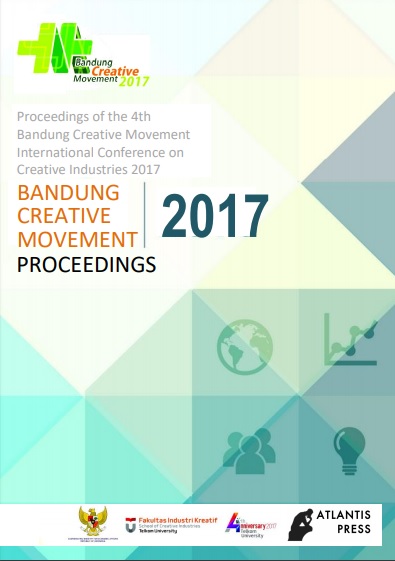Studies on Culture and Creative economics in Belgium (Brussels, Flanders and Wallonia)
Abstract
In recent decades, new forces, such as China, Russia and Brazil, have emerged in the international contemporary art market as part of the creative economy. At the same time the art market is becoming more visible globally, with the same art galleries and the same artists can be exhibited in different art exhibitions. For example, between 2008 and 2015 creative economic growth in Brussels has increased rapidly, from 37% in 2007 to 75% by 2015. In this paper we propose answering questions such as: How is the opportunity given by a creative entity to a particular creative person from a particular country represented in another country like Belgium at the international level? Can we observe the trends of art and the creative economy in the last decade? What is the underlying? Implications? By applying a cluster analysis, we map the creative economy market and look for trends according to the level of diversity in terms of art and artists or designers represented by exhibitions at international and national levels in Europe. To develop this analysis, we have established partnerships with Artfacts.net to get unique data about exhibitions in Europe.References
Guiette, A., Jacobs, S., Schramme, A., Vandenbempt, K., DC
Flanders, and Antwerp Management School (2011). Creative
Industries in Flanders: Mapping and economic analysis.
Higgs, P. L., Cunningham, S. D., and Bakhshi, H. (2008).
Beyond the creative industries: Mapping the creative
economy in the United Kingdom.
Idea Consult (2014). Analyse des liens entre l’industrie
wallonne, les services à haute intensité de connaissances et
les industries créatives et culturelles, dans une perspective de
chaînes de valeur. Brussels.
Lazzaro, E. (2017). Cultural and Creative Entrepreneurs. In
Mickov, B. and Doyle, J. E., editors, Culture, Innovation and
the Economy, chapter 7. Routledge, London.
Lazzaro, E. and Lowies, J.-G. (2014). Le poids économique
des Industries culturelles et créatives en Wallonie et Ã
Bruxelles. Institut wallon de l’évaluation, de la prospective et
de la statistique (IWEPS).
Lee, N. and RodrÃguez-Pose, A. (2013). Creativity, cities and
innovation: Evidence from UK SMEs. Nesta, London.
Loose, M. and Lamberts, M. (2006). Kunst en kunde. Aanzet
tot een monitoring instrument voor de artistieke sector.
Hoger Instituut voor de Arbeid (K.U.Leuven).
Mikić, H. and Unesco Institute for Statistics (2012).
Measuring the Economic Contribution of Cultural Industries:
A Review and Assessment of Current Methodological
Approaches. 2009 UNESCO framework for cultural
statistics handbook. UNESCO Institute for Statistics, Paris.


